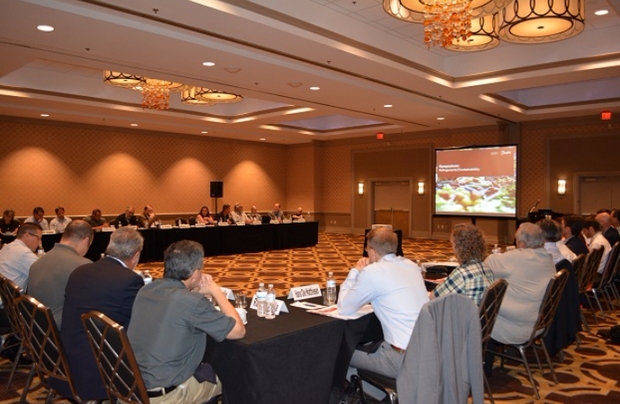Danfoss Symposium endorses the practical use of CO2 refrigeration

A symposium on commercial refrigeration in New Orleans, US reviewed solutions post HFC phase-down, pointing to CO2 as a leading option.
Danfoss’s fourth symposium on commercial refrigeration, which took place in New Orleans on September 14th 2016, brought together equipment manufacturers, end users, utilities, and regulators to come up with solutions to the recent Federal and State-level legislation affecting the industry.
The Symposium combined keynote presentations from external experts with discussions on case studies and policy issues.
CO2 refrigeration best way to respond emission standards
Brian Fricke, from the Building Equipment Research, Energy & Transportation Science Division at Oak Ridge National Laboratory (ORNL) outlined the results of a study that tested different refrigeration systems to identify their lifetime emissions.
The study compared several systems to a benchmark based on R-404A, a potent greenhouse gas. It found that the lowest emissions resulted from using carbon dioxide either in a cascade system with R-717 (ammonia) or a low-GWP refrigerant, or in a transcritical CO2 booster system. In comparison to these, the standard R-404A direct expansion system produced at least 73% more emissions.
Harrison Horning, director of equipment purchasing, maintenance and energy at Hannaford Brothers (part of Delhaize America), highlighted how case controls have helped significantly increased the efficiency of CO2 systems. He estimated that 20 percent of all refrigeration cases ordered today are being ordered with case controls, which is a dramatic upward trend from a couple of decades ago.
Financing going natrefs, US
The symposium also gave attendees information on where they can obtain state and local grants in the US to go green. Sacramento Municipal Utility District (SMUD) in California has started to develop financial programs – making the transition away from high-GWP refrigerants more cost effective.
Matthew Aberant, an expert on sustainability and energy, explained how the SMUD’s initiatives, such as the Custom Incentive Program, can assist with system upgrades, retrofits, the initial cost of new installations and supporting emerging technologies to combat HFC and energy efficiency legislation. He added that the State of New York also provides a similar programme to encourage and facilitate end users to go towards low-GWP refrigerants.
Hans Ole Matthiesen, global segment director – food retail, Danfoss outlined ways in which supermarkets can save on electricity and heating, using defrost shifting, thermal storage, rail-heat/anti-sweat heaters, and light dimming. Several recent supermarket installations with CO2 have been integrating these technologies to bring total costs down.
